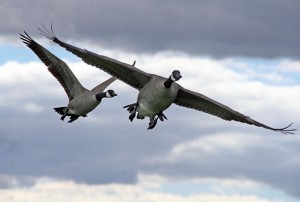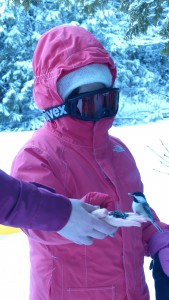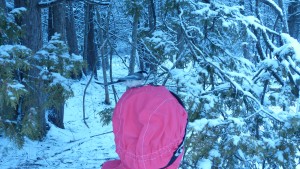I know I have probably spoken about the wonderful connection my school has with a nearby bird sanctuary, but I thought it might be of use to other educators to know some of the administrative requirements that are in place that make it happen. Depending on the location of your school in relation to that of a nearby green space, it may be possible to establish the opportunity for your students to access a natural setting (a park, a watershed, a field) on a regular basis – without extra costs or volunteers to organize. This is how teachers and students at my school have managed to be able to do just that.
Every Wednesday and Thursday, I take a groups of 5 kindergarten students out of the school yard, across a soccer field, over a bike path, and through a turnstile into a forest located at a large pond formed beside some rapids on the Ottawa River, not far from downtown Ottawa. It is called Mud Lake, and it is considered a “Provincially Significant Wetland and an Area of Natural and Scientific Interest by the government of Ontario.”
It is a very important destination for birders carrying all variety of cameras, and it boasts meandering walking paths in the summer and fall, and snowshoeing and cross-country skiing trails in the winter. Some winters have even seen a rink being flooded and cleared at one end. It is well used, but not overused or abused. The trails are clean and it is rare to find any garbage on a walk through the forest.
The kindergarten students are not the only lucky ones to be able to regularly go for a trek in the forest for an art lesson, some math, or science inquiry, this is what the entire school does each week. While having such a rich and diverse natural environment to explore may sound too good to be true, it is counterbalanced by the fact that the outdoor area on the school property is less than to be desired. In particular, the kinder yard is an inhospitable square of pavement surrounded by a chain-link fence, and offering absolutely no shade. The children wilt at their outdoor play on warm, sunny afternoons, so having the respite of a cool, verdant forest is extremely welcome.
To be able to take a small group of kindergarten students each time we visit, there are 2 important criteria that need to be fulfilled: firstly, the parents receive a year-long field trip permission form to sign on the first day of school. Secondly, the kinder educators maintain the student-to-adult ratio of 5:1, thus avoiding the necessity of requiring parent volunteers. This way, if we need to change the time of our visit for some reason, we can still go later on in the day because there is no one else to organize except ourselves.
On Wednesdays and Thursdays, while the rest of the class is engaged in outdoor learning, I go to the forest with a group of 5 kinders. I have 20 students who are divided into 4 groups and I take 2 groups each week. It would be great if we could manage more visits any time we wanted, but it is not entirely feasible within the framework of the kindergarten day or week to go more often. With the way we have it set up, each child gets to go every 2 weeks. They still always get their outdoor learning time each day, which may or may not be limited to the kinder yard, so the wait is not so long that they feel hard done by. After school hours, many of the students have started to visit the forest with their families, too, which may account for the clean and healthy condition of the trails and surrounding area.
Every school culture and location is different, of course. You may not have access to a large, safe, natural area to adopt as an extension of your class or your school’s learning environment, but if you do find somewhere to explore, hopefully 2 legal hurdles – the year-long field trip permission form and the student-to-adult ratio requirement – won’t prevent you from making it happen.






